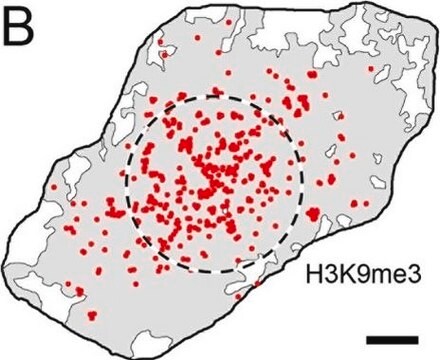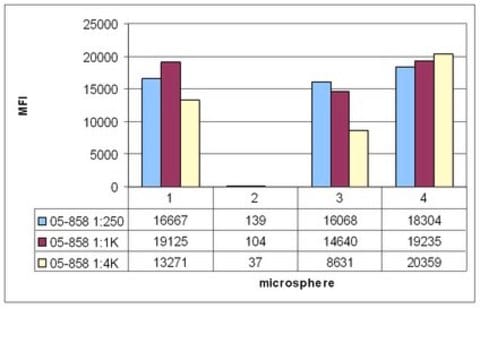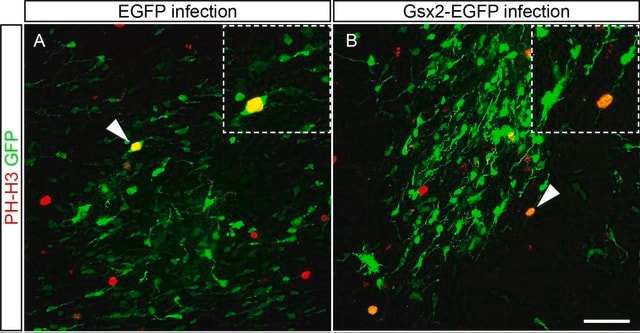04-858
Anti-Histone H4 Antibody, pan, rabbit monoclonal
culture supernatant, clone 62-141-13, Upstate®
Sinónimos:
H4, Histone H4
About This Item
Productos recomendados
origen biológico
rabbit
Nivel de calidad
forma del anticuerpo
culture supernatant
tipo de anticuerpo
primary antibodies
clon
62-141-13, monoclonal
reactividad de especies
Saccharomyces cerevisiae, human, vertebrates, chicken
fabricante / nombre comercial
Upstate®
técnicas
ChIP: suitable
multiplexing: suitable
western blot: suitable
isotipo
IgG
Nº de acceso NCBI
Nº de acceso UniProt
Condiciones de envío
dry ice
modificación del objetivo postraduccional
unmodified
Información sobre el gen
human ... H4C1(8359)
Descripción general
Especificidad
Inmunógeno
Aplicación
A 1:100,000 dilution of a previous lot detected unmodified recombinant Histone H4 protein (Catalog # 14-412) and Histone H4 in acid extracts from both untreated HeLa cells and cells treated with sodium butyrate (hyper-acetylated) or colcemid (hyper-phosphorylated) (Figure B).
Chromatin Immunoprecipitation:
An independent laboratory used a previous lot of this antibody in chromatin immunoprecipitation (Issac, C., 2006).
Multiplexing:
Serial dilutions of a previous lot were incubated with histone peptides containing various unmodified peptides spanning the aminoterminus of Histone H4 conjugated to Luminex® microspheres. The antibody recognized both modified and unmodified peptides.
Epigenetics & Nuclear Function
Histones
Calidad
Descripción de destino
Ligadura / enlace
Forma física
Almacenamiento y estabilidad
For maximum recovery of product, centrifuge the vial prior to removing the cap. Aliquot into microcentrifuge tubes and store at -20°C. Avoid repeated freeze/thaw cycles, which may damage IgG and affect product performance.
Nota de análisis
Recombinant Histone H4 (Catalog # 14-412) or HeLa cell acid extract.
Información legal
Cláusula de descargo de responsabilidad
¿No encuentra el producto adecuado?
Pruebe nuestro Herramienta de selección de productos.
Opcional
Código de clase de almacenamiento
12 - Non Combustible Liquids
Clase de riesgo para el agua (WGK)
WGK 1
Punto de inflamabilidad (°F)
Not applicable
Punto de inflamabilidad (°C)
Not applicable
Certificados de análisis (COA)
Busque Certificados de análisis (COA) introduciendo el número de lote del producto. Los números de lote se encuentran en la etiqueta del producto después de las palabras «Lot» o «Batch»
¿Ya tiene este producto?
Encuentre la documentación para los productos que ha comprado recientemente en la Biblioteca de documentos.
Nuestro equipo de científicos tiene experiencia en todas las áreas de investigación: Ciencias de la vida, Ciencia de los materiales, Síntesis química, Cromatografía, Analítica y muchas otras.
Póngase en contacto con el Servicio técnico








